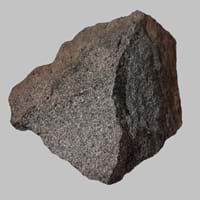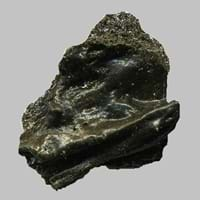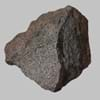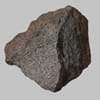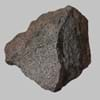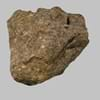Definition
Enderbite rock is an igneous rock which belongs to the Charnockite rock series
Tachylite is a vitreous form of basaltic volcanic glass. This glass is formed naturally by the rapid cooling of molten basalt
Origin
Enderby Land, Antarctica
Iceland
Discoverer
Unknown
Unknown
Etymology
From its occurrence in Enderby Land, Antarctica
From German Tachylite, from tachy- + Greek lutos soluble, melting
Class
Igneous Rocks
Igneous Rocks
Sub-Class
Durable Rock, Hard Rock
Durable Rock, Medium Hardness Rock
Other Categories
Coarse Grained Rock, Opaque Rock
Coarse Grained Rock, Fine Grained Rock, Medium Grained Rock, Opaque Rock
Texture
Granular
Vitreous
Color
Black, Grey, Orange, Pink, White
Black, Dark Brown
Durability
Durable
Durable
Appearance
Veined or Pebbled
Glassy
Interior Uses
Bathrooms, Countertops, Decorative Aggregates, Entryways, Floor Tiles, Homes, Hotels, Kitchens, Stair Treads
Decorative Aggregates, Interior Decoration
Exterior Uses
As Building Stone, As Facing Stone, Bridges, Paving Stone, Garden Decoration, Office Buildings
As Building Stone, As Facing Stone, Garden Decoration, Paving Stone
Other Architectural Uses
Curbing
Curbing
Construction Industry
As Dimension Stone
Cutting Tool, Knives, Landscaping, Scrapers
Medical Industry
Not Yet Used
Not Yet Used
Antiquity Uses
Artifacts, Monuments, Sculpture, Small Figurines
Artifacts
Commercial Uses
Curling, Gemstone, Laboratory bench tops, Tombstones
Cemetery Markers, Creating Artwork
Types
Not Available
Not Available
Features
Available in Lots of Colors and Patterns, It is One of the Oldest, Strongest and Hardest Rock
Available in Lots of Colors and Patterns, Clasts are smooth to touch, NA
Archaeological Significance
Monuments
Used
Not Yet Used
Famous Monuments
Data Not Available
Not Applicable
Sculpture
Used
Not Yet Used
Famous Sculptures
Data Not Available
Not Applicable
Pictographs
Not Used
Used
Petroglyphs
Not Used
Used
Figurines
Used
Not Yet Used
Formation
Charnockite is an intrusive igneous rock which is very hard and is formed due to weathering of existing rocks.
Tachylite is a fine-grained, hard rock which is a type of metasomatite, essentially altered basalt. It forms with or without crystallization, either below the surface as intrusive rocks or on the surface as extrusive rocks.
Mineral Content
Amphibole, Biotite, Feldspar, Hornblade, Micas, Muscovite or Illite, Olivine, Plagioclase, Pyroxene, Quartz
Feldspar, Olivine
Compound Content
Aluminium Oxide, CaO, Iron(III) Oxide, FeO, Potassium Oxide, MgO, MnO, Sodium Oxide, Phosphorus Pentoxide, Silicon Dioxide, Titanium Dioxide
Fe, Mg
Types of Metamorphism
Contact Metamorphism, Impact Metamorphism
Burial Metamorphism, Cataclastic Metamorphism, Contact Metamorphism, Hydrothermal Metamorphism, Impact Metamorphism, Regional Metamorphism
Types of Weathering
Biological Weathering, Chemical Weathering
Biological Weathering, Chemical Weathering, Mechanical Weathering
Types of Erosion
Glacier Erosion, Sea Erosion, Water Erosion, Wind Erosion
Chemical Erosion, Sea Erosion, Water Erosion, Wind Erosion
Grain Size
Coarse Grained
Medium to Fine Coarse Grained
Fracture
Not Available
Conchoidal
Porosity
Very Less Porous
Less Porous
Luster
Not Available
Resinous
Compressive Strength
Not Available
Cleavage
Not Available
Not Available
Toughness
Not Available
Not Available
Specific Gravity
Not Available
2.4
Transparency
Opaque
Opaque
Density
2.6 g/cm3
3.058 g/cm3
Specific Heat Capacity
Not Available
Resistance
Heat Resistant, Wear Resistant
Heat Resistant, Impact Resistant, Wear Resistant
Deposits in Eastern Continents
Asia
India
Cambodia, Russia, South Korea
Africa
Not Available
East Africa
Europe
Not Available
England, Germany, Hungary, Iceland, Scotland, Sweden
Others
Antarctica
Hawaii Islands
Deposits in Western Continents
South America
Not Available
Not Yet Found
Deposits in Oceania Continent
Australia
Not Available
Victoria
Enderbite vs Tachylite Characteristics
Though some rocks look identical, they have certain characteristics which distinguish them from others. Characteristics of rocks include texture, appearance, color, fracture, streak, hardness etc. Enderbite vs Tachylite characteristics assist us to distinguish and recognize rocks. Also you can check about Properties of Enderbite and Properties of Tachylite. Learn more about Enderbite vs Tachylite in the next section. The interior uses of Enderbite include Bathrooms, Countertops, Decorative aggregates, Entryways, Floor tiles, Homes, Hotels, Kitchens and Stair treads whereas the interior uses of Tachylite include Decorative aggregates and Interior decoration. Due to some exceptional properties of Enderbite and Tachylite, they have various applications in construction industry. The uses of Enderbite in construction industry include As dimension stone and that of Tachylite include Cutting tool, Knives, Landscaping, Scrapers.
More about Enderbite and Tachylite
Here you can know more about Enderbite and Tachylite. The life cycle of a rock consists of formation of rock, composition of rock and transformation of rock. The composition of Enderbite and Tachylite consists of mineral content and compound content. The mineral content of Enderbite includes Amphibole, Biotite, Feldspar, Hornblade, Micas, Muscovite or Illite, Olivine, Plagioclase, Pyroxene, Quartz and mineral content of Tachylite includes Feldspar, Olivine. You can also check out the list of all Igneous Rocks. When we have to compare Enderbite vs Tachylite, the texture, color and appearance plays an important role in determining the type of rock. Enderbite is available in black, grey, orange, pink, white colors whereas, Tachylite is available in black, dark brown colors. Appearance of Enderbite is Veined or Pebbled and that of Tachylite is Glassy. Properties of rock is another aspect for Enderbite vs Tachylite. The hardness of Enderbite is 6-7 and that of Tachylite is 5.5. The types of Enderbite are Not Available whereas types of Tachylite are Not Available. Streak of rock is the color of powder produced when it is dragged across an unweathered surface. The streak of Enderbite is white while that of Tachylite is vermilion. The specific heat capacity of Enderbite is Not Available and that of Tachylite is 0.56 kJ/Kg K. Depending on the properties like hardness, toughness, specific heat capacity, porosity etc., rocks are resistant to heat, wear, impact, etc.Enderbite is heat resistant, wear resistant whereas Tachylite is heat resistant, impact resistant, wear resistant.
